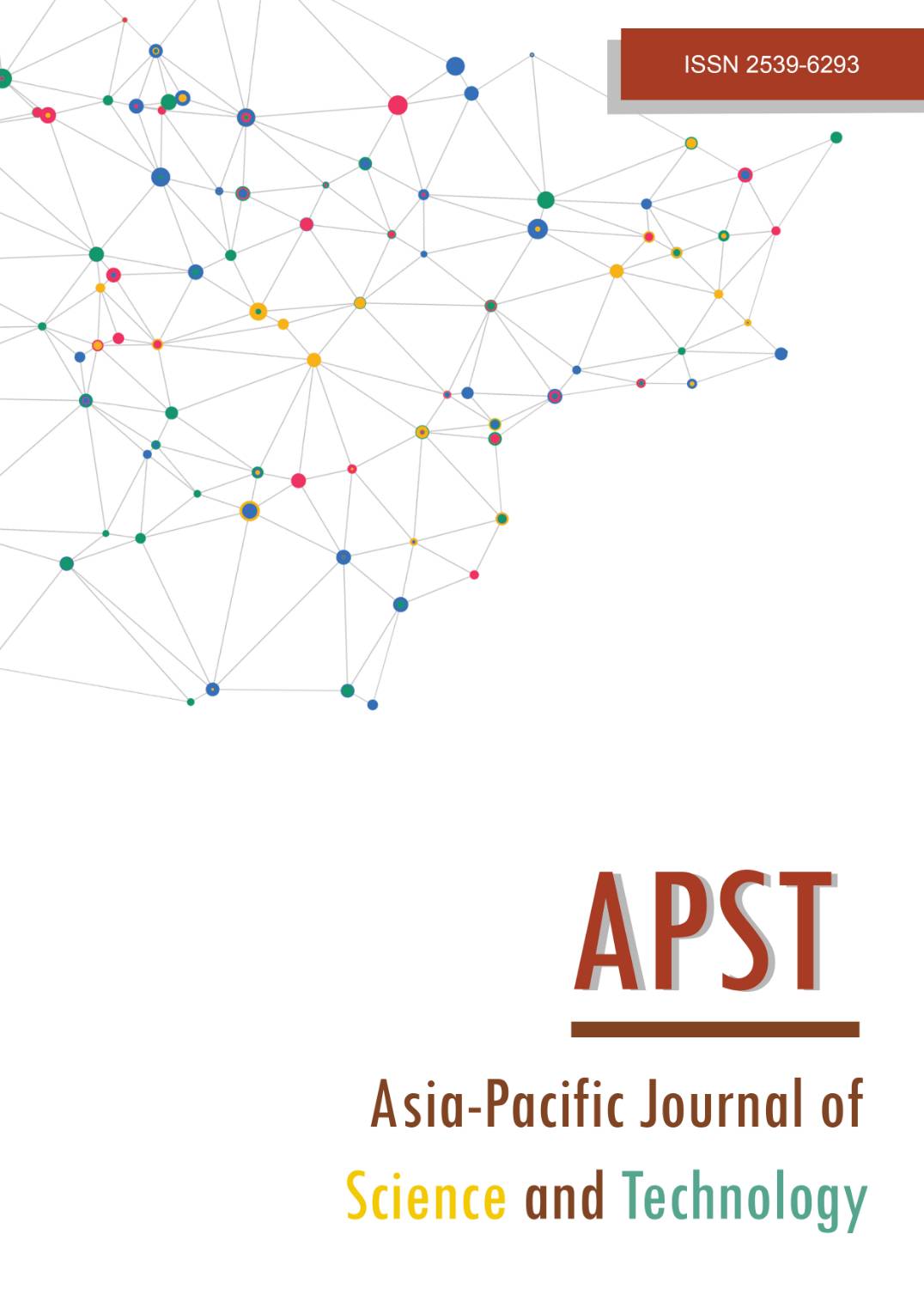QTL mapping specific to Thrips palmi resistance in Capsicum annuum
Main Article Content
Abstract
Capsicum, more commonly known as red pepper or chili pepper, is an important vegetable and spice throughout the world. Thrips are insects that cause highly devastating losses to Capsicum production, resulting in both direct and indirect damage. Some resistance to Thrips palmi (T. palmi) has been identified in the Capsicum species, with tests revealing that resistance to thrips is species specific. In this study, a Quantitative Trait Loci (QTL) analysis was performed to determine resistance against T. palmi in an F2 population derived from a cross between the highly resistant C. annuum AC 1979 and the highly susceptible C. annuum Berceo. In addition, a resistance test (Choice method) was used to study phenotypic data. One hundred sixty-one SNPs markers were used to construct a linkage map. An F2 genetic linkage map, constructed with a JoinMap 4.0 program, consisted of 13 linkage groups with a total length of 783.84 cM. The interval mapping of the area under the disease progress curve (AUDPC) showed significance in the LG1 (Chromosome 3) and LG2 (Chromosome 12). The highly significant QTL in LG1 was located on the M238 SNP marker with about 12.2% explained phenotypic variance. The highly significant QTL in LG2 was located on the M171 SNP marker with an explained phenotypic variance of 8.9%. These two QTLs may play a role in T. palmi resistance in C. annuum. Moreover, these M238 and M171 SNP markers will be used in pepper marker-assisted breeding for T. palmi resistance.
Article Details
References
Ali M. Chili (Capsicum spp.) food chain analysis: setting research priorities in Asia. Tinan: AVRDC-WorldVegetableCenter; 2006.
Maharijaya A, Vosman B, Verstappen F, Steenhuis‐Broers G, Mumm R, Purwito A, et al. Resistance factors in pepper inhibit larval development of thrips (Frankliniella occidentalis). Entomol Exp Appl. 2012;145(1):62-71.
Shipp J, Hao X, Papadopoulos A, Binns M. Impact of western flower thrips (Thysanoptera: Thripidae) on growth, photosynthesis and productivity of greenhouse sweet pepper. Sci Hortic. 1998;72(2):87-102.
Reddy PP. Sustainable crop protection under protected cultivation. Singapore: Springer Singapore; 2016.
Jones DR. Plant viruses transmitted by thrips. Eur J Plant Pathol. 2005;113(2):119-157.
Visschers IG, Peters JL, van de Vondervoort JA, Hoogveld RH, van Dam NM. Thrips resistance screening is coming of age: leaf position and ontogeny are important determinants of damage scores. Front Plant Sci. 2019;10:510.
Maharijaya A, Vosman B, Steenhuis-Broers G, Harpenas A, Purwito A, Visser RG, et al. Screening of pepper accessions for resistance against two thrips species (Frankliniella occidentalis and Thrips parvispinus). Euphytica. 2011;177(3):401-410.
Fery RL, Schalk JM. Resistance in pepper (Capsicum annuum L.) to western flower thrips [Frankliniella occidentalis (Pergande)]. HortScience. 1991;26(8):1073-1074.
van Haperen P, Voorrips RE, van Loon JJ, Vosman B. The effect of plant development on thrips resistance in Capsicum. Arthropod Plant Interact. 2019;13(1):11-18.
Maharijaya A, Vosman B, Steenhuis-Broers G, Pelgrom K, Purwito A, Visser RG, et al. QTL mapping of thrips resistance in pepper. Theor Appl Genet. 2015;128(10):1945-1956.
Maharijaya A, Vosman B, Pelgrom K, Wahyuni Y, de Vos RC, Voorrips RE. Genetic variation in phytochemicals in leaves of pepper (Capsicum) in relation to thrips resistance. Arthropod Plant Interact. 2019;13(1):1-9.
Mehle N, Trdan S. Traditional and modern methods for the identification of thrips (Thysanoptera) species. J Pest Sci. 2012;85(2):179-190.
Palmer JM, Mound L, Du Heaume GJ. CIE guides to insects of importance to man. 2. Thysanoptera. Oxon: CAB International Wallingford; 1989.
Seepiban C, Charoenvilaisiri S, Kumpoosiri M, Bhunchoth A, Chatchawankanphanich O, Gajanandana O. Development of a protocol for the identification of tospoviruses and thrips species in individual thrips. J Virol Methods. 2015;222:206-213.
Campbell CL, Madden LV. Introduction to plant disease epidemiology. New York: John Wiley & Sons; 1990.
Nishiguchi MK, Doukakis P, Egan M, Kizirian D, Phillips A, Prendini L, et al. DNA isolation procedures. In: DeSalle R, Girbet G,Wheeler W, editors. Techniques in molecular systematics and evolution. New York: Springer; 2002. p. 249-287.
Chomkaeo N, Struss D, Sakulsingharoj C, Sangtong V, Pongjareonkit S. Development of the single nucleotide polymorphism markers for Phytophthora capsici resistance in Capsicum annuum. Genomics Genet. 2014;7(3):192-201.
Van Ooijen J. JoinMap 4, Software for the calculation of genetic linkage maps in experimental populations. Wageningen: Kyazma BV; 2006.
Van Ooijen J, Kyazma B. MapQTL 6. Software for the mapping of quantitative trait loci in experimental populations of diploid species. Kyazma BV: Wageningen: Kyazma BV; 2009.
Voorrips R. MapChart: software for the graphical presentation of linkage maps and QTLs. J Hered. 2002;93(1):77-78.
Zhang GB, Meng S, Gong JM. The expected and unexpected roles of nitrate transporters in plant abiotic stress resistance and their regulation. Int J Mol Sci. 2018;19(11):3535.
Clark GB, Morgan RO, Fernandez M-P, Salmi ML, Roux SJ. Breakthroughs spotlighting roles for extracellular nucleotides and apyrases in stress responses and growth and development. Plant Sci. 2014;225:107-116.
Almagro L, Gómez Ros L, Belchi-Navarro S, Bru R, Ros Barceló A, Pedreno M. Class III peroxidases in plant defense reactions. J Exp Bot. 2009;60(2):377-390.


